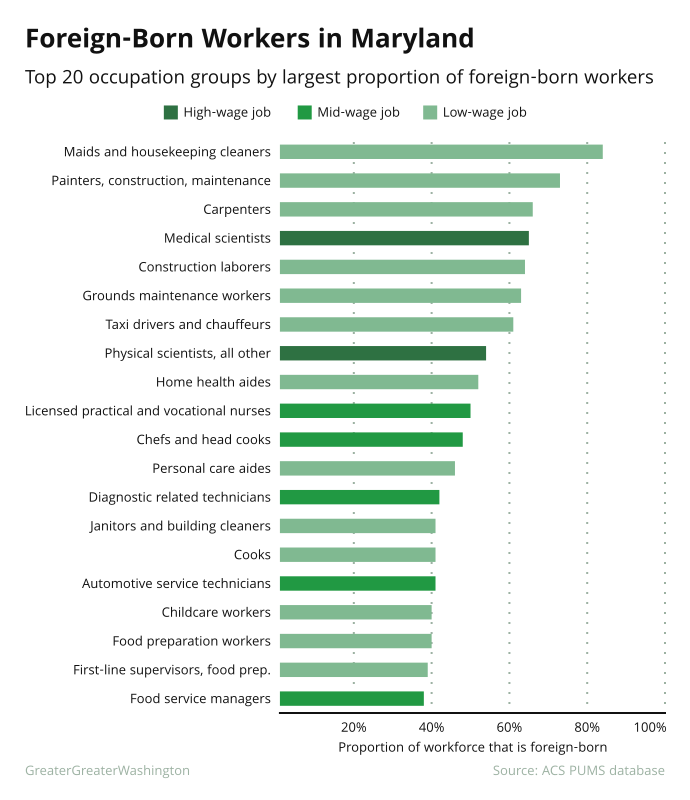Here’s how immigrants contribute to Virginia and Maryland’s workforces

Image by Martin Patrick licensed under Creative Commons.
Like DC, Virginia and Maryland have a huge number of maids, painters, and taxi drivers born outside of the US. But Virginia also has a large number of computer programmers who weren’t born here, and in Maryland, that’s the case for a lot of medical scientists. I've made graphs to show which jobs in Virginia and Maryland have the most immigrants.
In my last post, I looked at a short analysis by Ginger Moored at DistrictMeasured of how many immigrants make up DC’s workforce. The key takeaways were that 26% of DC’s workforce is made up of immigrants, and that for some specific occupations (economists, for example) the percentage is far higher.
That’s just the District, though. What about nearby areas of Virginia and Maryland?
For many occupations, the story is the same just outside the District as it is inside: in Maryland’s Montgomery, Prince George’s, Frederick and Charles counties, 27% of the total labor force is made up of foreign workers; in Alexandria, Arlington, Fairfax, Loudoun, and Prince William in Virginia, it’s 26%. And wherever you go around here, a lot of carpenters, housekeeping cleaners, and child care workers are immigrants.
But beyond this, there are differences in how many immigrants perform certain jobs. These differences reflect how various places in the region offer different economic opportunities.
In Northern Virginia, nearly half (45%) of computer programmers are foreign born, as are nearly 40% of physicians and surgeons.
In Maryland 65% of the medical scientists and 54% of physical scientists are immigrants. This is likely a result of the state’s strong biotechnology sector.
The underlying data for these charts is taken from the 2015 American Community Survey 1-year PUMS data. Just as with DistrictMeasured’s analysis, I’ve only considered occupations with more than 3,000 workers in order to reduce sampling errors. In this case, median wages are taken from the ACS data rather than Bureau of Labor Statistic data. While less accurate, the resulting wage levels are still roughly in line with BLS estimates.
It’s worth noting that “foreign-born” generally means immigrants, but doesn’t always. For certain occupations — for example, medical scientist — it is probable that many workers may not remain in the US as permanent residents (which is what makes someone an immigrant). Many foreign medical scientists live and work in the DC area with the intent to eventually return home, and there isn’t data available that distinguishes between whether a person intends to become a citizen of the US or not.
The raw data and code is available in this Github repository.


